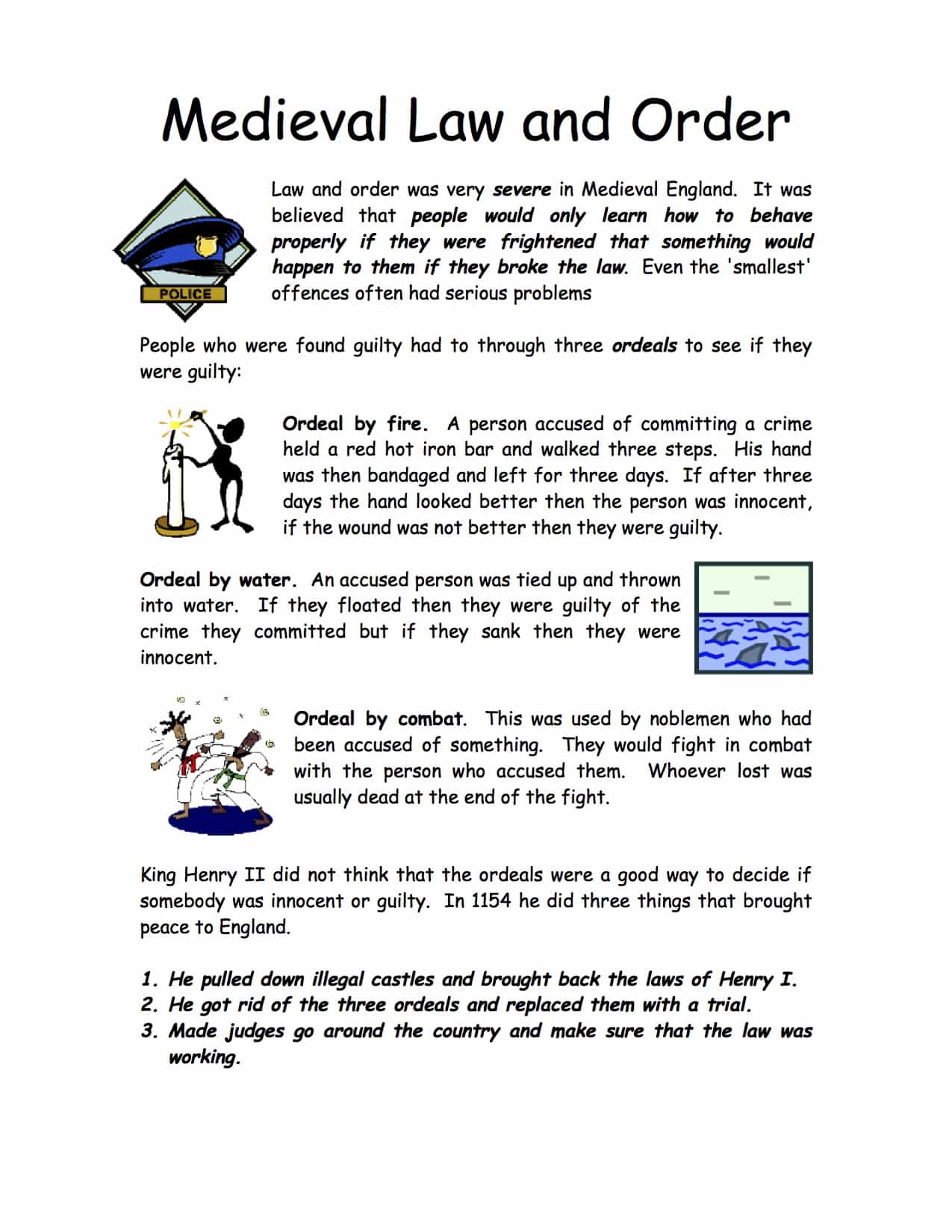Download Medieval Law and Order (Lower)
Click the button below to download this worksheet for use in the classroom or at home.
Download →
Law and order was very severe in Medieval England. It was believed that people would only learn how to behave properly if they were frightened that something would happen to them if they broke the law. Even the ‘smallest’ offences often had serious problems. People who were found guilty had to through three ordeals to see if they were guilty:
Ordeal by fire.
A person accused of committing a crime held a red hot iron bar and walked three steps. His hand was then bandaged and left for three days. If after three days the hand looked better then the person was innocent, if the wound was not better then they were guilty.
Ordeal by water.
An accused person was tied up and thrown into water. If they floated then they were guilty of the crime they committed but if they sank then they were innocent.
Ordeal by combat.
This was used by noblemen who had been accused of something. They would fight in combat with the person who accused them. Whoever lost was usually dead at the end of the fight.
King Henry II did not think that the ordeals were a good way to decide if somebody was innocent or guilty. In 1154 he did three things that brought peace to England.
Year 7 Worksheet:
-
- Aimed at Students studying at UK Year 7 or equivalent
- Free to download
- Use as you wish in the classroom or home environment
- Worksheet only
